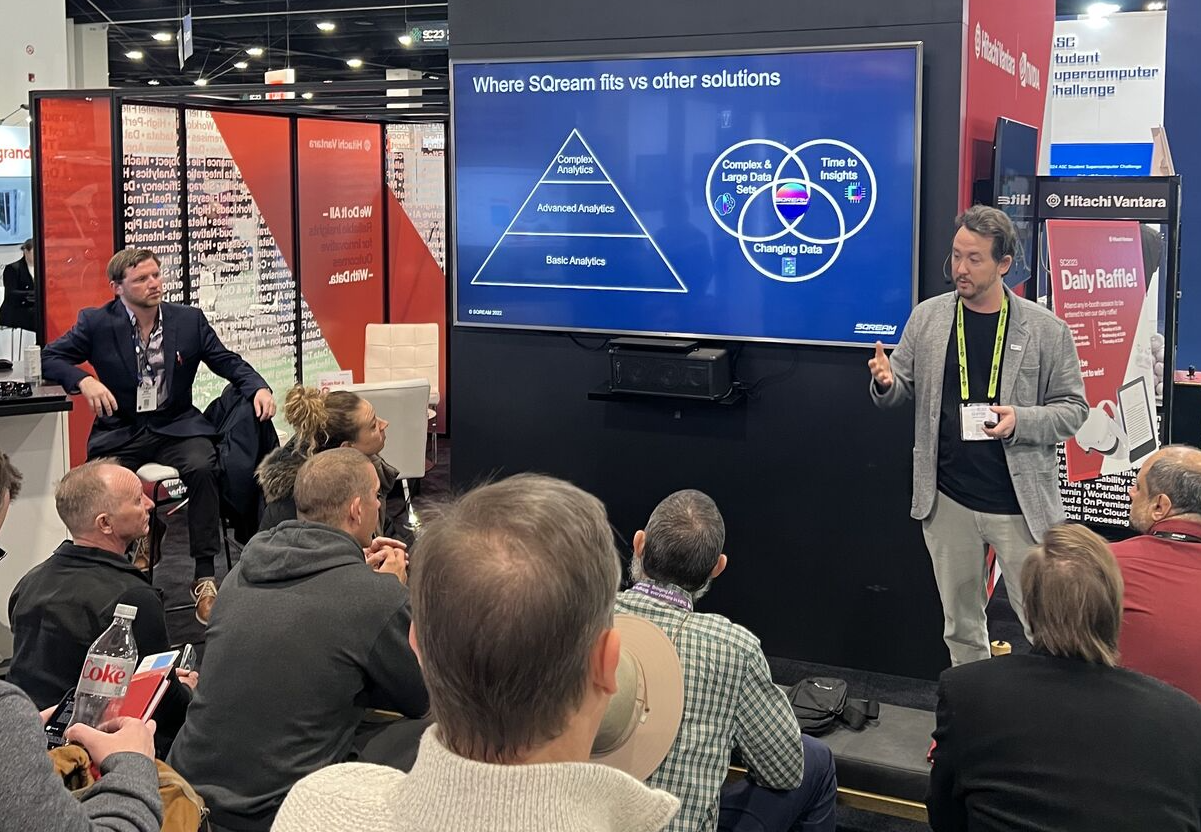This week industry experts have been gathering in Atlanta for Supercomputing 2024, a major international conference that showcases leading breakthrough technologies in high-performance computing, networking, storage, and analysis.
Held Nov. 17 to Nov. 22, a number of key announcements have been unveiled at the event from industry heavyweights like NVIDIA and specialist solution providers including SQream, a data acceleration company that helps enterprises manage intensive data loads and complex queries.
Let’s take a closer look at the most important announcements so far and the impact these will have on the industry as we prepare for 2025.
The newest Hopper chip is coming in December
First up, NVIDIA unveiled a new chip that’s set to offer major benefits for data centers that need to keep power usage in check.
Officially announced on Nov. 14, platforms built with the new H200 NVL PCIe GPU – commonly referred to as the Hopper chip, will be available in December 2024. It’s expected that enterprise clients will drive adoption, as purchasing the new GPU at an enterprise scale will come with a five-year subscription for the NVIDIA AI Enterprise service.
The H200 NVL is ideal for data centers with lower power — under 20kW — and air-cooled accelerator rack designs, according to Dion Harris, NVIDIA’s Director of Accelerated Computing.
Enterprise customers can refer to an Enterprise Reference Architecture for the H200 NVL for more details.
Digital twins for the manufacturing industry move into real-time
Next up, manufacturing companies exploring the benefits of digital twins can get early access to NVIDIA’s Omniverse Blueprint for Real-Time CAE Digital Twins.
This new reference pipeline shows how researchers or organizations can accelerate simulations and visualizations, bringing them into real-time. Previously, these complex simulations could take weeks or months to build, meaning that the insights derived from digital twin projects require extensive planning and preparation.
The capabilities of the Omniverse Blueprint for Real-Time CAE Digital Twins represent a significant leap forward that will help organizations boost agility and results with data-driven decisions.
Built on NVIDIA NIM AI microservices, this development was a major part of the Supercomputer 2024 demos with delegates able to see how the tool can be leveraged in a fluid dynamics simulation.
In an associated press release, NVIDIA Founder and CEO Jensen Huang commented, “We built Omniverse so that everything can have a digital twin.”
“By integrating NVIDIA Omniverse Blueprint with Ansys software, we’re enabling our customers to tackle increasingly complex and detailed simulations more quickly and accurately,” said Ajei Gopal, President and CEO of Ansys, in the same press release.
Data acceleration strategies come to the fore with SQream
The Supercomputing 2024 conference also included sessions from specialist solution providers.
SQream leverages GPU technology to dramatically enhance how quickly and cost-effectively enterprises can process and analyze large and complex data volumes.
The company’s Director of Strategic Partnerships & Sales, Benton Bagot (article’s featured photo), ran two in-person events at the conference to showcase how a solution with Hitachi Vantara is capable of accelerating AI innovation.
The partnership between SQream and Hitachi Vantara, first announced in 2022, enables large organizations to better utilize analytic systems like Hadoop-Hive, Cloudera and Teradata to accelerate critical insights and run AI/ML models by combining the power of data acceleration and innovative object storage offerings.
The partnership approach from SQream has been progressing significantly throughout the course of 2024, with the tools available on a number of other platforms including Snowflake.
The showcase at Supercomputer 2024 highlights how the industry is responding to demand for more efficient ways to handle data that can be accessed in a range of ways to complement existing strategies and architectures.
Scientific research frontiers receive a boost with CUDA-X library updates
Finally, this year’s conference also highlighted a major change that promises to support research across scientific communities and research institutions.
Researchers play a crucial role in helping to mold the foundation for future breakthroughs in AI and computer science. NVIDIA’s new CUDA-X libraries help accelerate the real-time simulations to provide an improved development platform to realize quantum computing, widely seen as the next frontier for the industry.
The announcement confirmed that Google and NVIDIA will work together with the goal of bringing quantum simulation times down from a year to an hour. Such incredible time-savings will have a major impact on the pace of research.
In addition, NVIDIA detailed the release of a new version of cuPyNumeric, an accelerated scientific research computing library.
These libraries are also receiving updates targeting scientific research, including changes to CUDA-Q and the release of a new version of cuPyNumeric, an accelerated scientific research computing library to let research projects scale to thousands of GPUs with minimal code changes.
The future of computer science
The Supercomputing 2024 conference highlighted major advances in the underlying technologies that support the delivery of cutting-edge digital solutions.
These advances that touch on everything from data acceleration to quantum computing are set to keep pushing the frontiers of computer science to new heights.









